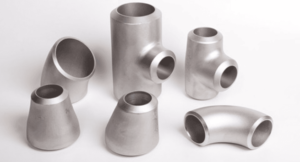Welded pipe fittings are essential components in the construction of piping systems, facilitating the connection, direction change, branching, or termination of pipes. Employed across a broad spectrum of industries including oil and gas, water treatment and chemical processing, these fittings are welded directly onto pipes to ensure a permanent and leak-proof connection.
Advantages of Welded Pipe Fittings
Welded pipe fittings offer several advantages over other types of connections. Their welded nature provides a robust, leak-proof joint, crucial for systems operating under high pressure. This method of connection also allows for a more streamlined design, reducing pressure drops and minimising turbulence within the flow.

The durability and resilience of welded fittings make them ideal for applications involving extreme conditions. Read more about this here.
Types of Welded Pipe Fittings
Welded copper pipe fittings, designed for specific roles in piping systems, come in various forms.
Elbows change the flow direction, available in 45° and 90° angles for different layouts. Tees split or combine flow, with straight and reducing types to fit pipe sizes. Reducers connect pipes of varying diameters for smooth flow, while caps seal pipe ends. Flanges aid in the easy assembly and maintenance of pipelines, enhancing both convenience and safety.
If you are interested in finding out more or want to purchase these products, visit a specialist such as https://watkinspowis.co.uk/products/copper-pipe-fittings-and-press-systems.
Sizes and Materials
Welded pipe fittings come in a wide range of sizes and materials to meet the diverse needs of various piping systems. Sizes vary from small fittings for residential water systems to large components for industrial applications, selected according to pipe dimensions and flow requirements.

The primary materials include carbon steel, stainless steel and alloy steel, chosen for their compatibility with pipe materials and their ability to withstand environmental conditions like extreme temperatures and corrosion.